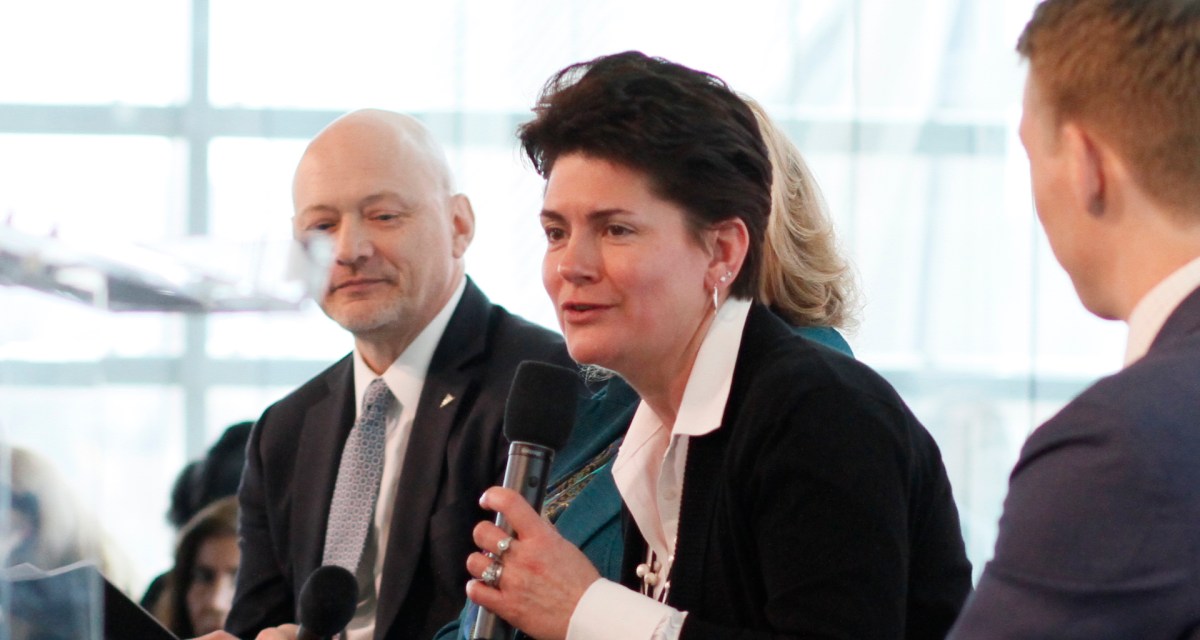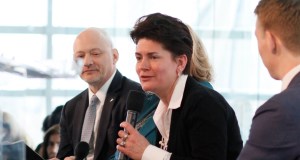Maria Roat: Government must become more digital to respond during crises like COVID-19

The coronavirus pandemic made apparent the need for government to expand its digital footprint to serve citizens in a more streamlined, modern fashion, said Deputy Federal CIO Maria Roat.
“I think the need to be digital was even more evident than then people anticipated, right?” Roat said Wednesday at the IBM’s Think Gov digital event, produced by FedScoop. “Everybody’s got a mobile phone. Everybody expects that digital interaction, not just with their friends and family but with their government. So I think this really put a big spotlight on that and where there’s a need for more digital enhancements and how we interface in that customer experience with every person that we deal with across the country.”
While many agencies, like the Department of Veterans Affairs, were able to rise to the occasion to improve digital interactions with Americans during the pandemic, Roat pointed to necessary opportunities to improve “authentication and identity management as we interface with our citizens” as takeaways from the crisis.
“Those are some of the lessons learned and challenges that we bring forward and how do we address those as the government continues to expand its digital footprint,” she said.
Collaboration tools
Roat pointed to agencies’ use of internal collaboration tools as a bright spot during the pandemic. At the Small Business Administration, where Roat was CIO until recently, those collaboration tools were already turned on — but their usage spiked during the move to mass telework, she said.
“I could see the usage, I had data and I could see the charts, and I could see the usage and how it grew,” Roat said.
But it could be better, she said. Particularly, collaboration tools could be used across government among agencies.
“I’d like to see more across government usage of the collaboration capabilities,” Roat said. “So the same things I was able to do within my agency — why can’t I do that with another agency? I’m at the Small Business Administration, I’m interfacing with Treasury and interfacing with all these other agencies.”
The issue isn’t the technology, but the “the processes and the policies and records management and all of those things that go with it,” she said. “So I’d like to see that continue and that work around that.”
Data sharing
Roat also celebrated success around data sharing during the pandemic, attributing it to the development of the Federal Data Strategy.
“The pandemic shows even more the need for data and how to use data and just the importance of that,” she said.
Roat pointed to the Department of Health and Human Services‘ Palantir-based HHS Protect platform as an example. “In nine days, they created a data capability where they linked 187 data sets from federal agencies, from the states, health care facilities, from academia and others. And they brought all that together. That’s just one example of the data piece and the need to continue to accelerate the use of data. And I think the Federal Data Strategy really set a lot of the foundation and a long term strategy for the federal government and its use of data.”
With any such success, it’s important to sustain that momentum after the pandemic eventually subsides, Roat said.
“There were so many things that happened so fast, and people were able to cut through and really make things happen to respond very quickly to innovate and implement changes,” she said. “I want to see that continue. And for that to continue, there needs to be that focus on long-term modernization across the federal government.”
Roat said there’s been a dialogue with the Federal CIO Council on what needs to be done to make sure that acceleration continues.
“So it’s not, you know, a one and done,” she said. “We went through the pandemic, we’re still teleworking. But for the long term, what are those things we need to continue to put resources behind as a community?”






